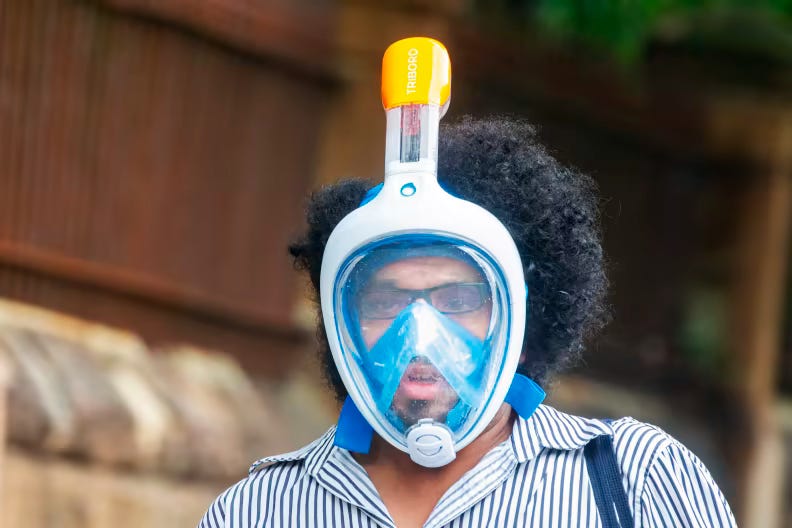Reminiscences on Covid: Part 1
A look back at the early days of Covid communication snafus.
Covid is by no means over. That second wave that “experts” were saying was going to happen in the fall and winter? The one we all pushed out of our minds while we enjoyed our summers? It happened. The mutations that often occur in viruses? It’s happening with this virus as well.
Yet because we have a vaccine, the amount of fear has decreased dramatically. We now exist in a reality of duality - our feet firmly in Covid and our heads in a future where the disease doesn’t matter. Hopefully the exponential growth we’ve seen through January becomes exponential decline as the people most likely to be harmed by the virus are vaccinated first. Deaths should fall faster than infections as the elderly and compromised are protected first (hopefully quickly) and the general population continues to wait.
For all this warranted optimism, there is still an incredible amount of uncertainty. Numerous unanswerable questions remain about what life will look like. We are, in a sense, at a halfway point. With that in mind, it’s worth thinking back to the early days of the virus. What happened? What is ridiculous in hindsight? Was anything actually “obvious” in real time? And what can we learn going forward?
To start: how do you provide recommendations with limited data while not hindering your credibility if you’re wrong?
Putting aside the debate on distribution of responsibility - State vs. Federal government - the main issue in the beginning was the uncertainty around what exactly Covid was. We didn’t know how it spread; we didn’t know what could help; we didn’t know if we could order takeout. In short, we knew exactly the amount one would expect us to know in the face of a brand new disease.
As with any process, we learned more as time went on. But the early decisions around communication made by medical officials seemed to weaken their ability to update their recommendations as research progressed.
The Surgeon General at the time, Jerome Adams tweeted “STOP BUYING MASKS! They are NOT effective in preventing general public from catching #Coronavirus, but if healthcare providers can’t get them to care for sick patients, it puts them and our communities at risk!”
How are we supposed to read that? Masks don’t work for the general public but it does work for doctors? Is it a supply thing or an effectiveness thing? As with most arguments today, you pick and choose the part of that tweet you agree with and then parrott it to your friends.
No matter what they knew or didn’t know at the time, why did they paint themselves into a box? If you know a situation will be evolving, it seems a more prudent approach to say “masks, when used correctly, can help block airborne-transferred respiratory diseases. We have not seen any data to show they help with Covid, but we will update our guidance as more data comes available.”
Unless there is data saying masks don’t help, what’s the harm? Would we have been angry at a qualified statement? Do we crave direct recommendations?
Or if it really was about saving supplies for medical staff, lean into that approach. Honesty might not change all consumers’ behavior, but it leads to better outcomes than obfuscation. A party line for the CDC could have been “the inability to secure masks for doctors will be fatal to our medical population, decreasing the quality of care you can receive if you get Covid. Please stay at home as your best defense until we can obtain adequate masks.”
And that leads us to the final miscalculation around communication strategy: creating a plan based on the assumption that people are going to stay home. This fundamentally misunderstands humans, or at least a lot of Americans. This is a country ingrained with concepts like freedom, rights, and privileges. Why fight it?
Instead of talking to the 30% of people who are already listening to you, think about how to make the best of the 70% who won’t. Instead of saying “don’t go outside” and leaving it at that, recommend the best way to do things and then qualify for when that isn’t followed. “If necessary to go outside, look out for one another. The decision to be close to someone else affects both of you, and this virus is deadly for some and meager for others. Our essential workers have no choice but to work: protect them.”
The CDC and WHO had a massive task, and the science around understanding and fighting the disease progressed incredibly fast. But their flip-flop on mask wearing is still pointed to by the no-mask movement as a reason to not listen. In uncertainty, there are precious few chances to become the authority on a subject; choosing to convey false certitude in fast-changing environments is a recipe for ceding the high ground.


